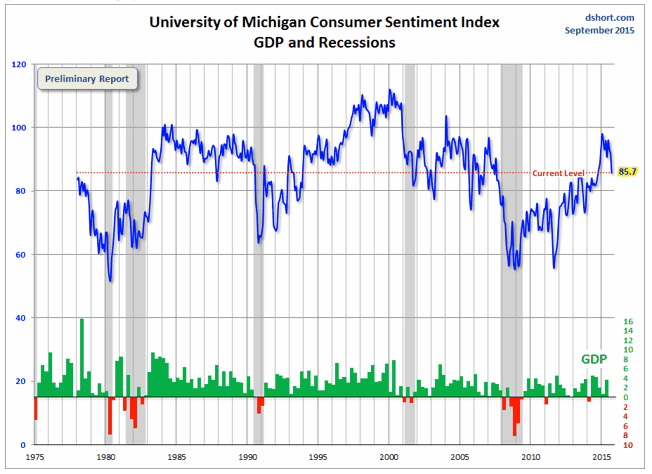Stock markets finished higher last week with the Dow Jones Industrial Average up just over 100 points and the benchmark indexes climbing around 2% in what was a shortened week thanks to the public holiday. This was one of the best weekly performances since March.

Meanwhile, the US dollar fell against most of it’s major trading partners, losing ground against the euro, British pound and Swiss franc. Gold futures also traded lower but retraced some of those losses to stay above the key $1100 level.
An Important Week Ahead
Looking ahead, markets will be braced for a key week of economic releases with September’s FOMC meeting set to take centre stage.
Just a few weeks ago, the majority of market participants believed the Fed would most likely raise rates in the September meeting. However, recent economic data and stock market volatility has seen a shift in expectations.
Judging from the response of equity markets and the dollar over recent days, it does appear that markets are re-positioning themselves in expectation that the Fed could now leave interest rates where they are on Wednesday.
This will potentially be bullish for stocks in the short-term and could see them recover some lost ground. The US dollar could come under more pressure and attention will then turn to the accompanying FOMC policy statement.
Fed Forward Guidance
The difficultly the Federal Reserve has at the moment is in trying to balance it’s own credibility versus doing what’s best for the US economy.
On the one hand, keeping rates on hold suggests that the Fed doesn’t think the economy is strong enough to withstand monetary tightening. Volatility in the stock market over the last two weeks will have pressed this point home.
On the other hand, the Fed does not want to raise rates too soon because if the move backfires and the economy slips into recession the bank will lose credibility. The Fed will definitely not want to raise rates one month and then drop them the next month as it implies that they don’t know what they’re doing.
What is interesting right now is that although markets are becoming more optimistic that the Fed will keep rates on hold this month, they are still pricing in rate hikes later on in the year, in October and December.
Looking Ahead
Raising rates by 0.25% is unlikely to have any major economic effect but it would be a psychological event that would mark the beginning of a rate tightening cycle. Because of this, and in order to remain credible, the Federal Reserve will be extremely cautious about raising rates too soon.
Recent stock market volatility has provided a small taster of what could happen if the Fed raises too soon and there is every chance that the Fed will delay again on Thursday. Ultimately, if the Fed does act too soon and the market is not ready, you can expect more volatility. This is a key point because it is the market that will dictate whether the Fed made a good decision or not. In other words, if the economy is not ready, the market will make it’s point known.
And recent Economic data and market events suggest that the Fed might well be better to hold off raising rates this month. For example, just last week, the University of Michigan Confidence Number came out at it’s lowest in a year while wholesale trade inventories declined by -0.1%, potentially putting a dampener on next quarter GDP.
Typically, you would expect to see the Fed raising rates when economic data is improving but the economic recovery is still largely anaemic and for most investors, this is plain to see.
As a result, unless global markets calm down and economic data improves, the Fed are likely to not only hold rates this month, but also in October and potentially December too.
If they hold rates and then allude to the above in their forward guidance this week, then we could well see the markets head higher once again. This would lead to continue re-balancing for the US dollar and another leg higher for US equities.

